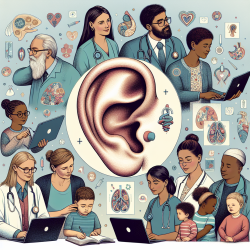Introduction
Amyotrophic Lateral Sclerosis (ALS) is a neurodegenerative disorder characterized by progressive motor neuron death, leading to muscle weakness, including respiratory muscles. This results in significant respiratory complications, which are a major cause of morbidity and mortality in ALS patients. The recent state-of-the-art review titled "Respiratory therapies for Amyotrophic Lateral Sclerosis: A state of the art review" offers valuable insights into respiratory therapies that can improve outcomes for ALS patients.
Understanding the Impact of ALS on Respiratory Function
ALS affects the respiratory system by causing muscle atrophy and weakness, leading to hypoventilation, dystussia, and dysphagia. The review highlights that these impairments can result in progressive airway obstruction, weakened airway defenses, and increased risk of pulmonary infections. The deterioration of respiratory functions, including sleep, cough, swallowing, and breathing, underscores the need for effective respiratory therapies.
Key Respiratory Therapies for ALS
- Mechanical Insufflation-Exsufflation (MI-E): This therapy uses a device to simulate cough by applying positive pressure to inflate the lungs followed by negative pressure to expel air. MI-E is effective in improving airway clearance and reducing the work of breathing.
- Lung Volume Recruitment (LVR): LVR involves breath stacking to increase lung volume beyond normal capacity, improving cough efficacy and airway clearance.
- Non-Invasive Ventilation (NIV): NIV supports breathing by providing ventilatory assistance, which is crucial for managing hypoventilation and improving survival rates.
- Respiratory Strength Training (RST): RST involves exercises to strengthen respiratory muscles, enhancing ventilation, cough, and swallowing functions.
- Therapeutic Acute Intermittent Hypoxia (tAIH): This emerging therapy aims to induce respiratory plasticity and improve breathing function through controlled exposure to low oxygen levels.
Implementing Research Outcomes in Practice
Practitioners can enhance their skills by integrating these therapies into their practice. The review suggests that early detection and management of respiratory function are crucial for prolonging survival in ALS patients. Regular monitoring of pulmonary function, respiratory strength, and swallowing function can help detect subtle changes and initiate appropriate therapies.
Interprofessional collaboration is essential for optimizing patient care. Speech-language pathologists, neurologists, respiratory therapists, and other healthcare professionals can work together to provide comprehensive care tailored to the needs of ALS patients.
Encouraging Further Research
While the review provides a comprehensive overview of existing therapies, it also highlights the need for further research. Controlled studies are necessary to evaluate the long-term effects of these therapies on clinical outcomes, such as quality of life and survival. Additionally, research into the optimal timing and dosing of therapies can help identify patients who will benefit the most.
To read the original research paper, please follow this link: Respiratory therapies for Amyotrophic Lateral Sclerosis: A state of the art review.










